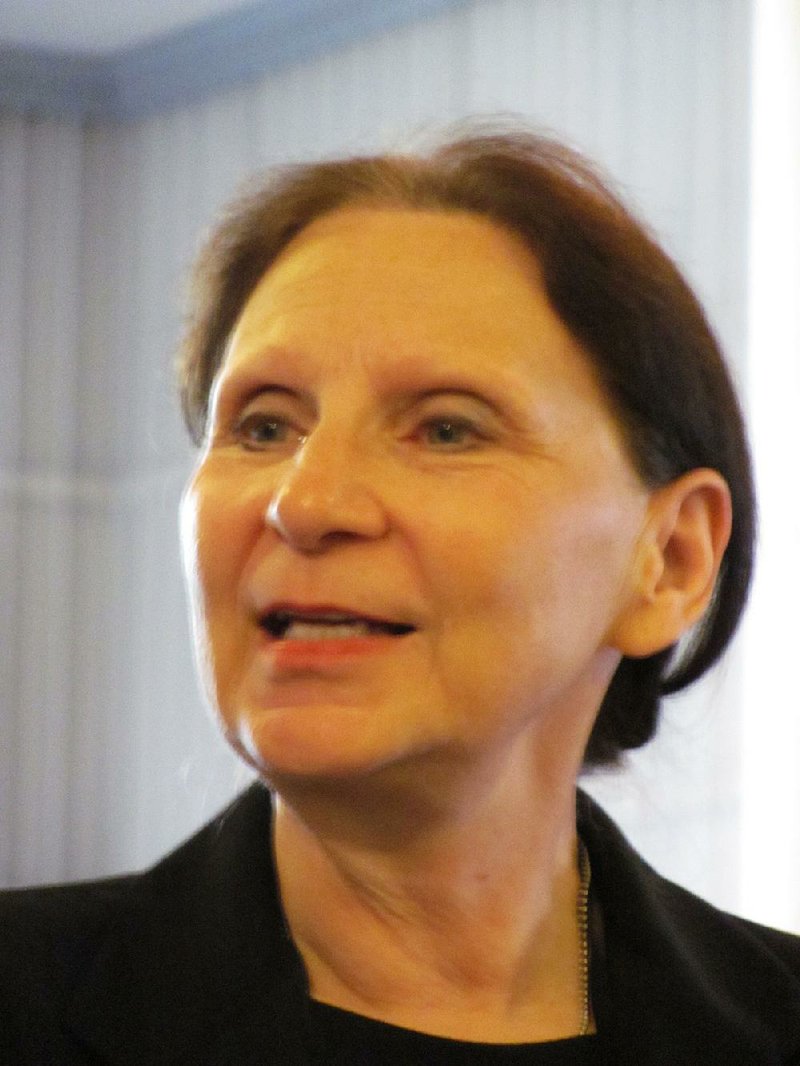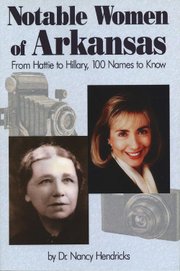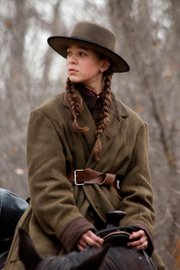Step aside, Daisy Mae Yokum. Sorry, Ma Barker. The Dogpatch gal and the bank-robbing gang leader have colorful histories with ties to Arkansas, but they don't make the cut in Nancy Hendricks' book.
Notable Women of Arkansas: From Hattie to Hillary, 100 Names to Know (Butler Center Books, $29.95) calls for "world class accomplishment."
The book cites Hillary Clinton as "the only former first lady to have run for U.S. president," whether as first lady of Arkansas or first lady in the White House. Hattie Caraway? The first woman elected to the U.S. Senate, in 1932, but not so well known.
Long-winded speeches weren't Caraway's style, and the press called her "Silent Hattie," Hendricks writes. Quiet or not, the senator from Jonesboro stood for veterans' benefits, women's rights and college education, and received a standing ovation in the Senate at the completion of her term.
"These are 100 women, living and dead, I consider my new best friends," Hendricks says. The author taught English at Arkansas State University at Jonesboro, and also wrote Senator Hattie Caraway: An Arkansas Legacy (The History Press, $19.99).
"Some were born in Arkansas," Hendricks says of her subjects, "some were raised in Arkansas and some chose Arkansas later in life. They all represent the diversity of the state."
Hendricks spoke about the book earlier this month for the Butler Center for Arkansas Studies at Little Rock's Main Library. She writes for the Butler Center's online Encyclopedia of Arkansas History and Culture, and credits the encyclopedia as a major source in her research. But several of the book's subjects have not been included in the encyclopedia, she says -- "yet."
Among them: Mary Lowe Good, founding dean of the Donaghey College of Engineering and Information Technology at the University of Arkansas at Little Rock; Olympic medalist and University of Arkansas track star Deena Kastor; and Hope-born pop singer Ketty Lester ("Love Letters"). Each receives a biographical essay in Hendricks' book, along with Pine Bluff native and Watergate figure Martha Mitchell; vampire novelist Charlaine Harris (Dead Until Dark), who lived in Magnolia for many years; and television's Annie Oakley, actress Gail Davis, who was born in Little Rock.
The book's other entries include:
• Opera soprano Blanche Thebom -- an international star of striking appearance with radiant, 6-foot-long hair. After retirement from the Metropolitan Opera in New York, she staged operas at the University of Arkansas at Fayetteville.
• Pauline Pfeiffer -- novelist Ernest Hemingway's second of four wives, and according to him, his best editor. Hemingway wrote part of A Farewell to Arms in a barn-turned-writer's studio at the Pfeiffer family home in Piggott. But Papa declared Arkansas too hot for a man to sit and write, and he and Pauline split over troubles including that he and she took opposite sides on the Spanish Civil War.
• Temperance crusader Carry Nation -- famed for the hatchet she used to chop whiskey barrels. Prior to the hatchet, she had been using rocks to break up saloons. The ax was her husband's idea, and she kept the suggestion even though she cut loose from him. Near the end of her life, she lived in Eureka Springs.
From Little Rock's Central High School desegregation crisis of 1957, the book recognizes civil rights leader Daisy Bates and Little Rock nine members Melba Pattillo Beals, Elizabeth Eckford, Gloria Ray Karlmark, Carlotta Walls LaNier, Minnijean Brown Trickey and Thelma Mothershed Wair.
Also featured are "Queen of the West" Dale Evans, who spent her girlhood in Osceola; basketball player Hazel Walker, native and longtime resident of Ashdown; Helena-born former U.S. Senator Blanche Lincoln (D.-Ark.); actress Melinda Dillon (A Christmas Story), who was born in Hope; and Alice Walton, Wal-Mart heir and Crystal Bridges Museum of American Art founder.
Hendricks relies on Charlotte Moorman to be the book's most unconventional attention-getter, not counting outlaw queen Belle Starr, found guilty of horse theft in Fort Smith.
Moorman was a Julliard-trained musician and performance artist, best known as the "Topless Cellist." She was arrested for indecent exposure, although hard to see behind her cello. Fired from the American Symphony Orchestra, she found a welcome on The Tonight Show with Johnny Carson.
"Imagine me," Moorman said. "I grew up in Little Rock, Arkansas, and here I was in New York in handcuffs."
Hendricks points out in the book's introduction that some of the state's most famous women are fictional. Lorelei Lee, for example: the "little girl from Little Rock" as portrayed by Marilyn Monroe in Gentlemen Prefer Blondes (1953).
All the book's women had obstacles to overcome, the author says. For many, the first barrier was simply to be a woman in a man's world, and Lorelei Lee had the answer: "I can be smart when it's important."
From Grammy award-winner and former Northwest Arkansas resident Lucinda Williams to former surgeon general of the United States Joycelyn Elders, born in Howard County, Hendricks says, "We can be so proud to call them Arkansas women."
Style on 04/17/2016



